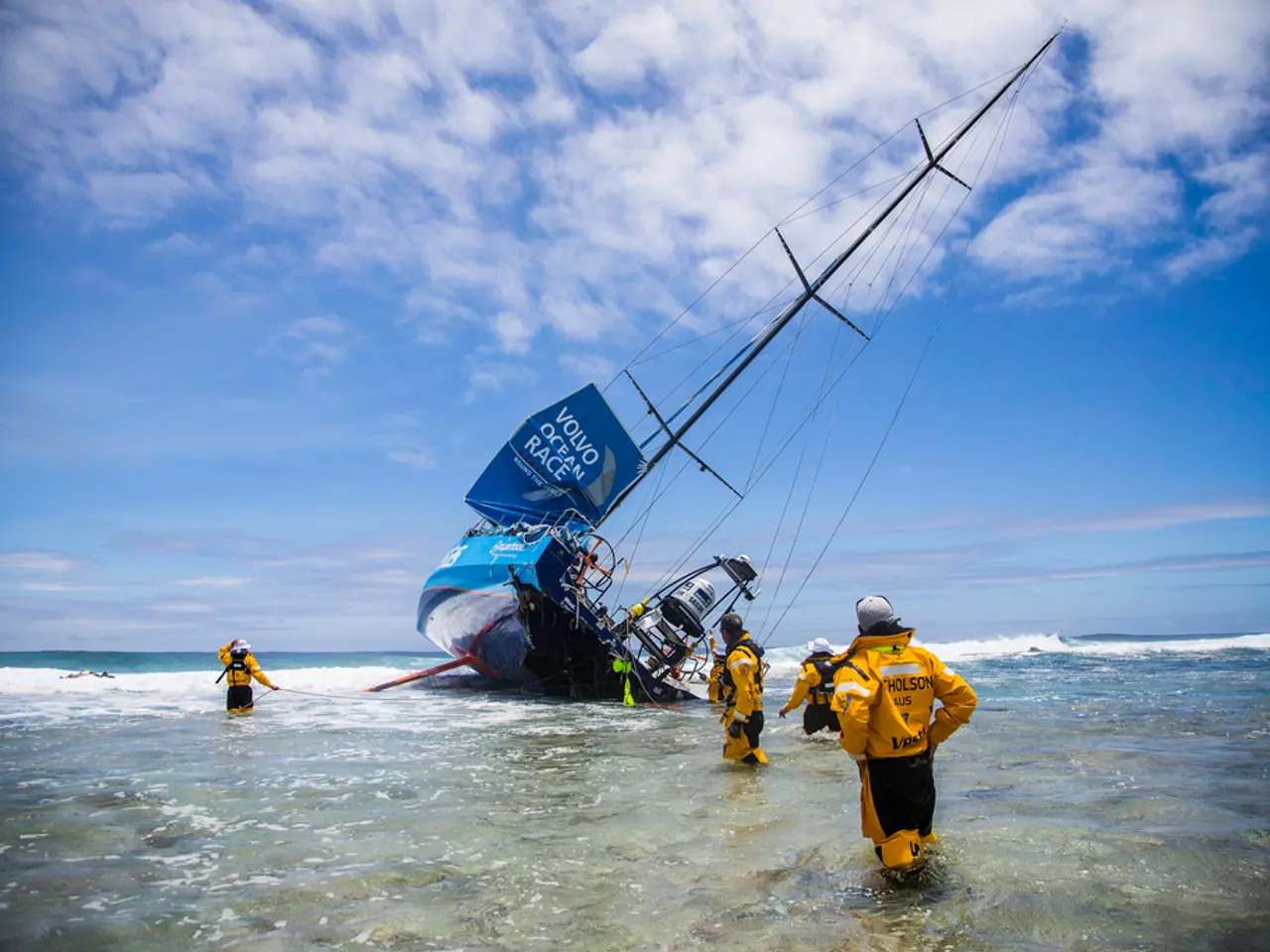East Coast braced for hazardous rip currents from Tropical Storm Erin: Essential safety information outlined
Swimming in the ocean can be a fun and refreshing activity, but it's important to be aware of the potential dangers, especially during hazardous weather events like Tropical Storm Erin. Here are some key safety tips to remember when swimming in rip currents.
First and foremost, always swim where lifeguards are present. Their presence ensures immediate assistance if needed, significantly reducing the risk of drowning. Swimming in designated areas, following beach flag warnings, and lifeguard instructions, are also crucial for your safety.
When it comes to dealing with rip currents, it's essential not to fight the current by trying to swim directly back to shore against it. The current's force is too strong. Instead, swim parallel to the shoreline to escape the current's pull. After moving out of the current, swim at an angle away from it toward the shore.
If you're unable to swim free, stay calm and conserve your energy. Float or calmly tread water, and signal for help by waving your arms. Remember, it's important to never swim alone, and keep a close watch on children.
Staying informed about local beach and weather conditions is also vital, especially during storms like Tropical Storm Erin, which can increase the frequency and strength of rip currents. Recognizing signs of rip currents such as choppy or discolored water, calm patches between waves, and debris rapidly moving away from shore, can help you avoid getting caught in one.
Tropical storms increase ocean hazards, making rip currents stronger and more unpredictable. These precautions become especially critical during events like Tropical Storm Erin, when dangerous marine conditions are more likely.
In summary, the safest approach is to swim with lifeguards present, avoid fighting the current, swim parallel to shore to escape, stay calm, and be aware of changing conditions brought by storms. If you find yourself caught in a rip current, the first step is to flip to your back and float. If you can't make the swim, just float until help arrives.
Tropical Storm Erin is forecast to strengthen into the first hurricane of the Atlantic season by Saturday morning. Beaches along the East Coast, including New Jersey, can expect rip currents from Aug. 21 to Aug. 27. Puerto Rico can also expect a high risk of rip currents this weekend and into early next week.
Stay safe and enjoy the ocean responsibly!
Understanding the weather forecast is crucial, especially during storms like Tropical Storm Erin, as it can strengthen ocean hazards and increase the frequency of dangerous rip currents. In environmental science, being aware of such hazardous weather events can help prevent drowning and ensure safety while swimming in the ocean.








